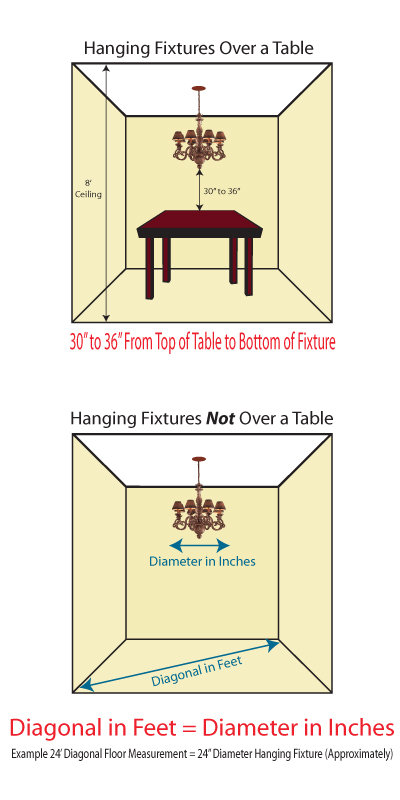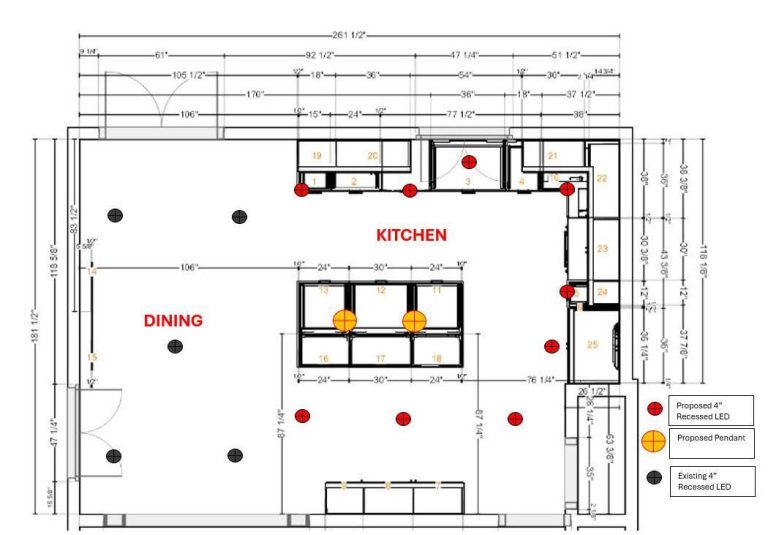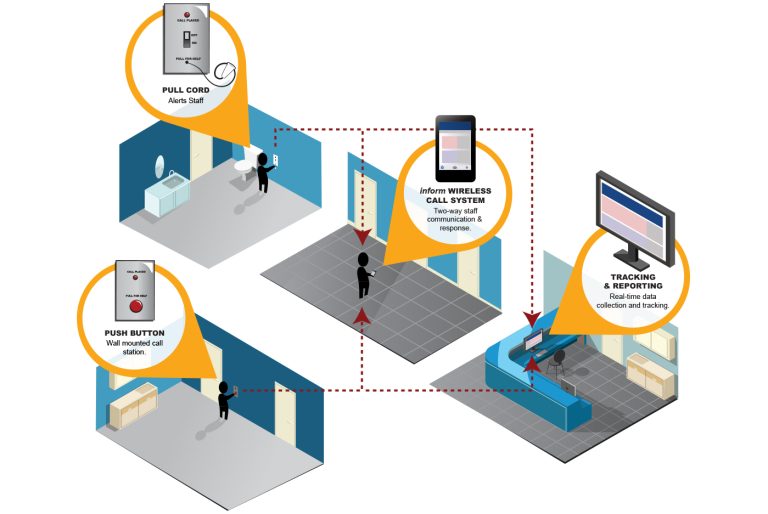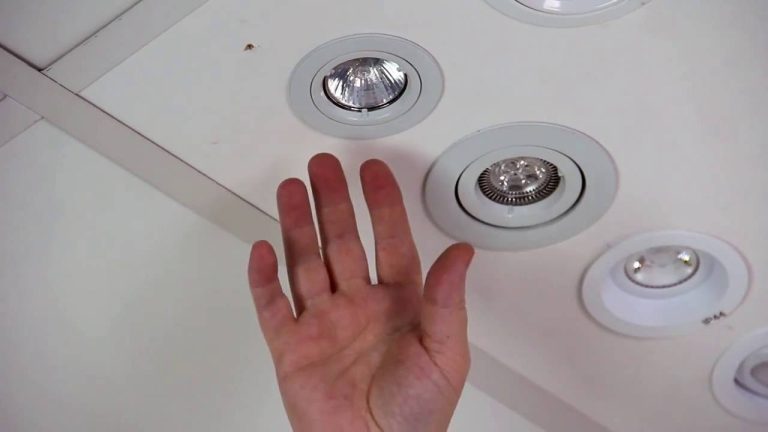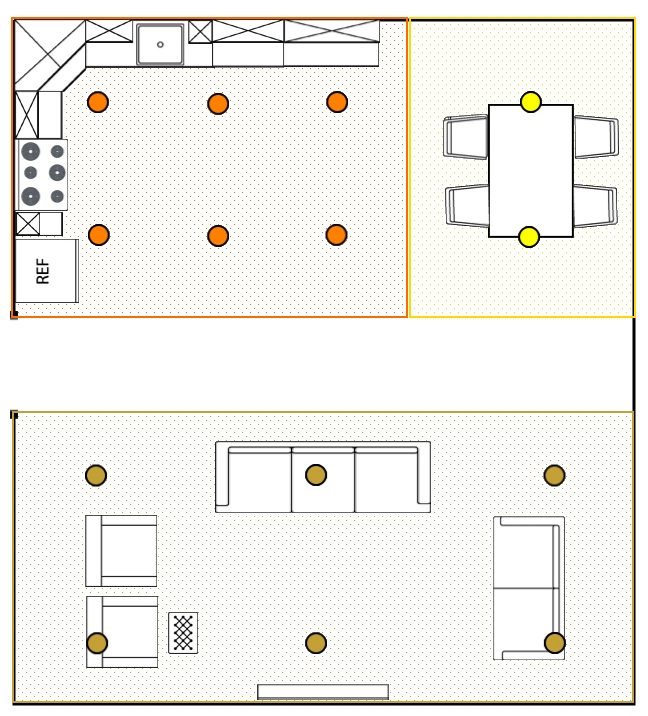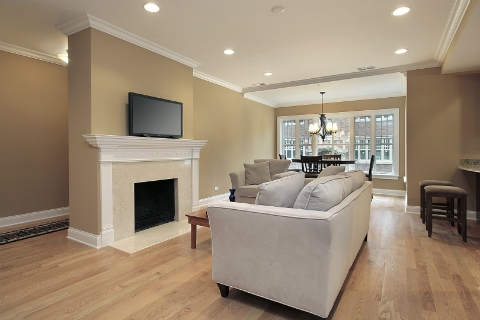How to Determine Size of Light Fixture: Expert Tips
How to determine size of light fixture? To determine the size of a light fixture, add the room’s length and width in feet, then convert that sum to inches. For example, a 10×12 room equals 22 feet; the ideal fixture should be about 22 inches wide. Adjust based on room purpose and ceiling height.
Many people find themselves puzzled when it comes to selecting lighting that perfectly complements their space. The right light fixture not only illuminates your room but also enhances its overall aesthetic and functionality. Imagine walking into a room where the lighting is just right—neither too overpowering nor too dim.
It’s like finding the perfect balance that makes everything look and feel better. Curious about how to achieve that perfect harmony? In this guide, we’ll reveal simple steps and insider tips to help you determine the ideal light fixture size for any room in your home. By the end, you’ll feel confident and excited to transform your space with the perfect lighting. Ready to shed some light on this topic? Let’s dive in!
How to Determine Size of Light Fixture?
Choosing The Right Fixture Style
Choosing the right fixture style is crucial. It affects your room’s look. A well-chosen fixture adds charm and function. It complements your décor. It also provides necessary lighting. The right style enhances your space. It reflects your taste and personality. Let’s explore key factors in selecting a fixture style.
Understanding Room’s Theme
Consider your room’s theme first. Is it modern, classic, or rustic? Your fixture should match. Modern spaces need sleek, simple designs. Classic rooms often feature ornate fixtures. Rustic settings work well with natural materials. Choose a style that fits seamlessly.
Matching Fixture Size
Size matters. Your fixture should be proportionate. A small fixture in a large room looks lost. An oversized fixture in a small space overwhelms. Measure your room. Then choose a fixture that complements its size. Keep balance in mind.
Considering Fixture Functionality
Think about the fixture’s purpose. Is it for general lighting or task-specific? A dining room needs bright, focused lighting. A bedroom might benefit from softer, ambient light. Choose a fixture that meets your lighting needs.
Reflecting Personal Style
Your fixture should reflect you. Love vintage vibes? Opt for a retro fixture. Prefer minimalism? Choose a simple, clean design. Ensure your choice aligns with your personal style. This creates a cohesive, inviting space.

Credit: www.sofary.com
Measuring Ceiling Height
Measuring ceiling height is key in choosing the right light fixture. The height of your ceiling influences both the fixture’s size and placement. This ensures the fixture complements the room and provides adequate lighting. A well-measured ceiling height can transform your space’s ambiance.
How To Measure Ceiling Height
Start by using a tape measure. Stand on a stable surface. Extend the tape measure from floor to ceiling. Note the measurement in feet and inches. This helps in selecting the right fixture size.
Importance Of Ceiling Height In Fixture Selection
Ceiling height affects how a fixture hangs and lights the room. A low ceiling needs a flush mount or semi-flush fixture. High ceilings can accommodate larger chandeliers or pendants. This ensures the fixture fits the space perfectly.
Standard Ceiling Heights And Fixture Guidelines
Standard ceiling heights are between 8 to 10 feet. For 8-foot ceilings, fixtures should hang no lower than 84 inches. High ceilings over 10 feet allow for more dramatic fixtures.
Adjusting Fixture Size For Unique Ceilings
Vaulted or sloped ceilings require special consideration. Adjustable fixtures work best for varied ceiling heights. Ensure the fixture hangs evenly and provides ample light.
Considering Room Size
Choosing the right light fixture size for a room is crucial. It impacts both aesthetics and functionality. A well-sized light fixture enhances the room’s ambiance. It also ensures adequate illumination. Consider the room’s size to get the right light fixture. This will help you make the best choice.
Considering Room Dimensions
Measure the room’s length and width. This gives a clear picture of the space. Multiply these dimensions to get the total square footage. Larger rooms need bigger fixtures. Smaller rooms need more compact ones. This ensures balance and proportion.
Ceiling Height Matters
Ceiling height plays a vital role in fixture choice. High ceilings require taller fixtures. Low ceilings need shorter or flush mounts. This prevents the room from feeling cramped. It also ensures the light fixture is effective.
Functional Areas Within The Room
Identify key areas in the room. These could be dining, seating, or workspaces. Each area may need its own light fixture. This approach ensures each area gets adequate lighting. It also creates a cohesive look.
Proportion To Furniture
Consider the size of the furniture. A large table needs a proportionate fixture above. Small tables need smaller fixtures. This maintains harmony in the room’s design. It avoids overwhelming the space.
Visual Impact And Style
Think about the fixture’s style. It should match the room’s decor. A statement piece can add character. Balance style with function for best results. A well-chosen fixture completes the room.
Calculating Fixture Diameter
Choosing the right light fixture size is crucial for a room’s ambiance. The fixture’s diameter plays a vital role in achieving balance. A fixture that’s too big or too small can disrupt the room’s look. Calculating the perfect diameter helps you avoid these pitfalls.
How To Calculate The Fixture Diameter
The fixture diameter should match the room’s dimensions. Start by measuring the room’s length and width. Add these two numbers together. This sum will guide your fixture size.
Example Of Calculating Fixture Diameter
Imagine a room 12 feet long and 10 feet wide. Add 12 and 10 to get 22. A fixture with a 22-inch diameter would fit well. This simple formula helps ensure a balanced look.
Consider Ceiling Height
Ceiling height affects fixture choice too. High ceilings can handle larger fixtures. Lower ceilings need smaller fixtures to avoid overwhelming the space.
Adapting To Different Room Styles
Room style influences fixture choice. Modern spaces may prefer sleek designs. Traditional rooms might lean towards ornate fixtures. Ensure the fixture complements the room’s style.
Testing The Fixture Size
Visualize the fixture size in your room. Use painter’s tape to outline the fixture diameter on the ceiling. This helps you see if the size works.
Balancing Function And Aesthetics
Choosing the right size light fixture enhances both function and aesthetics in a room. Measure the room’s dimensions and consider the fixture’s purpose. A balanced fixture size ensures optimal lighting without overwhelming the space.
Balancing function and aesthetics in lighting can transform a room from ordinary to extraordinary. It’s not just about choosing a light fixture that fits; it’s about harmonizing style with purpose. A well-chosen light fixture enhances the beauty of your space while serving its practical needs. But how do you strike this balance? Let’s explore some key considerations.
Ensuring Proper Illumination
Start by assessing the room’s purpose. Is it a cozy reading nook or a vibrant dining area? Each space demands different lighting levels. A chandelier might add elegance to your dining room, but in a reading area, a floor lamp might be more practical. Choose fixtures that provide enough light to fulfill the room’s primary function without overpowering the space.
Complementing Room Style
Consider the room’s décor and style. Does your room have a modern or vintage vibe? Your light fixture should complement these elements. Imagine walking into a rustic living room with a sleek, metallic fixture—it might feel jarring. Instead, opt for a fixture that matches the room’s design theme, creating a cohesive look that feels intentional and inviting.
Considering Fixture Size
Determine the appropriate fixture size based on room dimensions. A small pendant light might get lost in a large space, while an oversized chandelier could overwhelm a small room. Measure your room and choose a fixture that is proportionate to the space. Remember, a fixture that is too large or too small can disrupt the visual balance.
Incorporating Personal Style
Your lighting choice should also reflect your personal style. Are you drawn to minimalistic designs or do you prefer bold, statement pieces? Choose fixtures that resonate with you personally. This is your chance to infuse your personality into the room, making it uniquely yours.
Thinking About Versatility
Imagine hosting a dinner party under the perfect ambient light. Now picture a quiet evening reading under the same fixture. Can your light adapt to both scenarios? Consider fixtures with adjustable brightness or multiple light settings. Versatility ensures the fixture remains functional across different activities.
Balancing function and aesthetics in your light fixture selection requires thoughtful consideration. Think about how the fixture will serve your needs while enhancing the room’s beauty. What does your space say about you, and how can lighting amplify that message?

Credit: www.hkinteriors.com

Credit: www.barnlight.com
Frequently Asked Questions
How Do I Measure For A Light Fixture Size?
Measure your room’s length and width in feet. Add them together. That number in inches is your ideal fixture size.
What If My Room Has A Low Ceiling?
Opt for a flush or semi-flush mount light. It provides ample light without overwhelming the space.
Does Fixture Size Depend On Room Function?
Yes. Larger fixtures suit dining rooms or living areas. Smaller fixtures work well in bedrooms or bathrooms.
Conclusion
Choosing the right light fixture size is crucial for room aesthetics. Measure room dimensions first. Consider ceiling height. Think about the fixture’s purpose. Dining areas need larger lights. Smaller fixtures suit cozy spaces. Balance is key. Ensure the fixture complements your room’s style.
Test light intensity before installation. Avoid overwhelming brightness. Seek professional advice if unsure. A well-sized light fixture enhances comfort and ambiance. Your room should feel inviting and warm. Proper lighting sets the mood. Make informed choices for a beautiful living space.
Light transforms rooms; choose wisely.
Related Article

